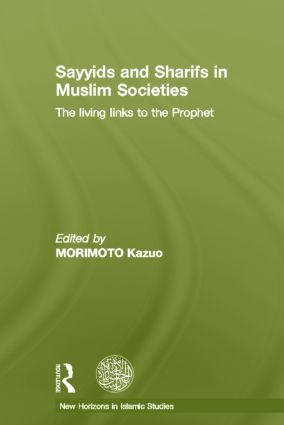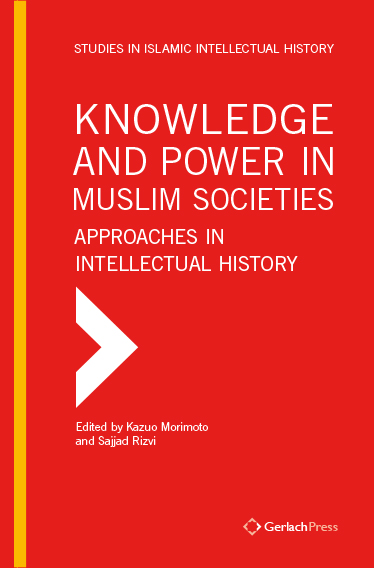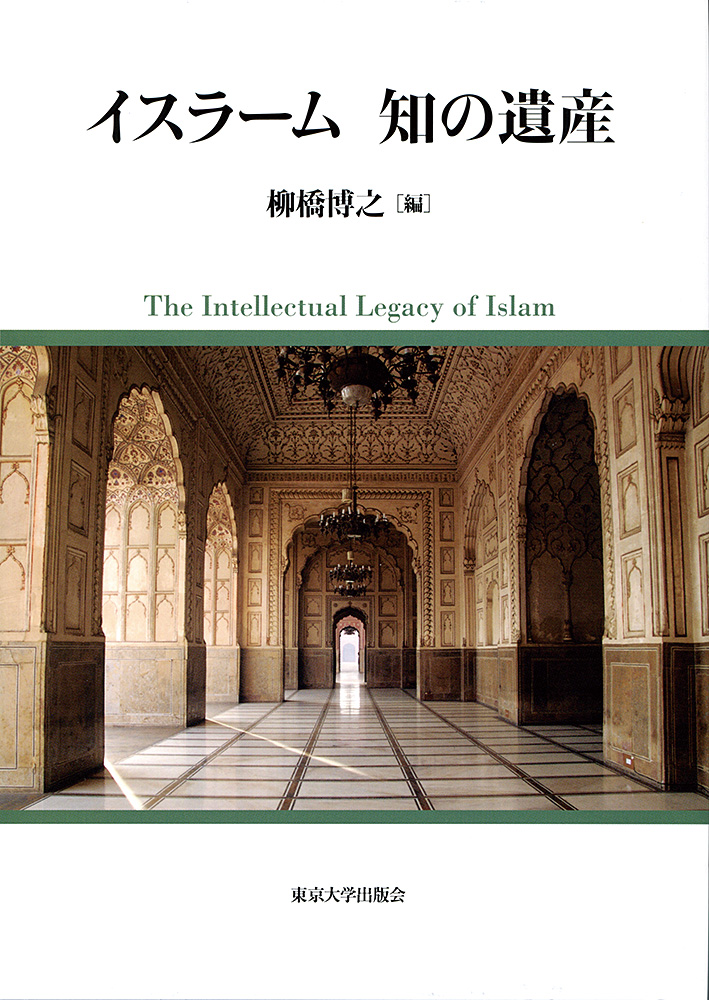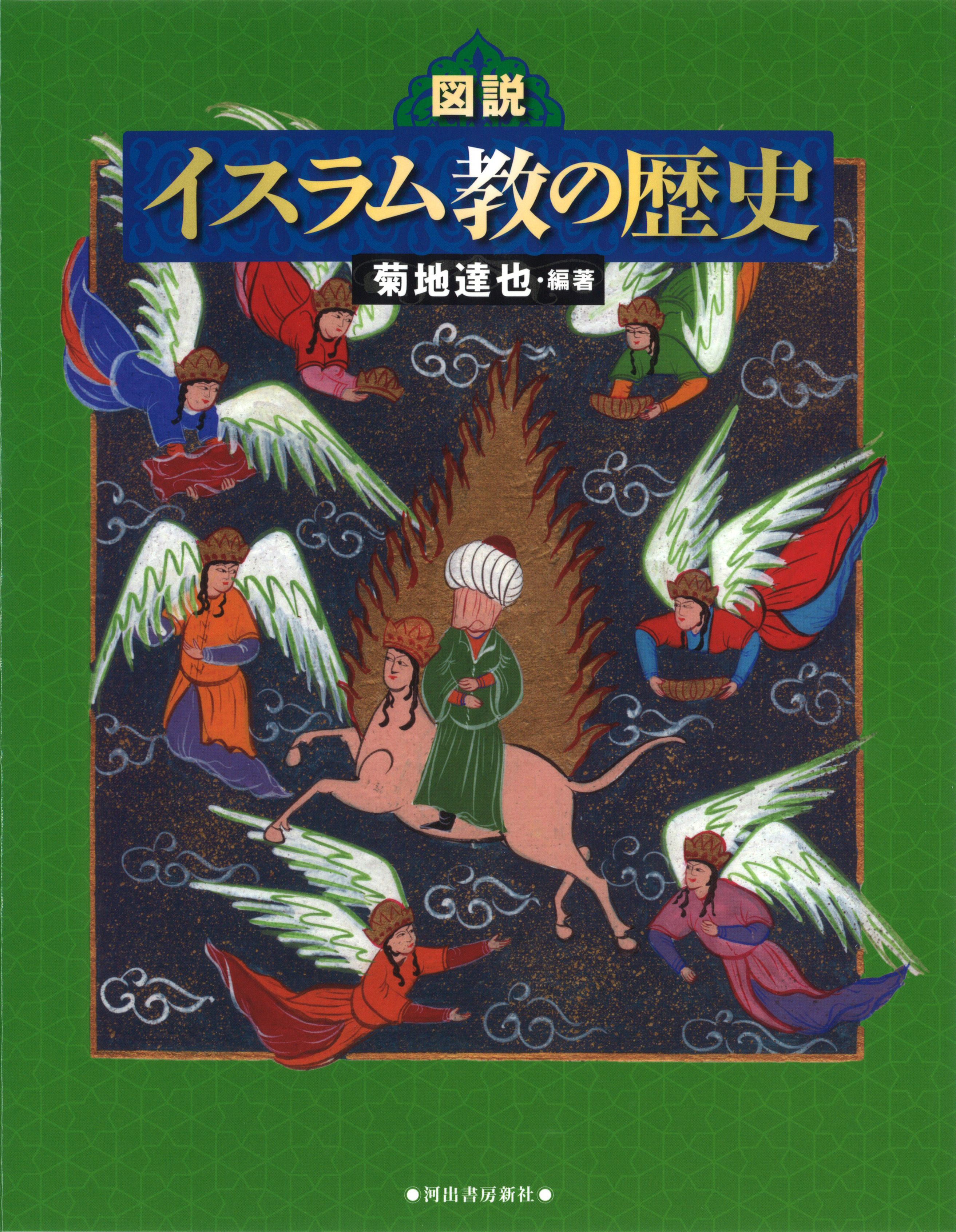
Title
Sayyids and Sharifs in Muslim Societies: The Living Links to the Prophet
Size
276 pages, hardcover
Language
English
Released
2012
ISBN
978-0-415-51917-5
Published by
Routledge
Book Info
See Book Availability at Library
Japanese Page
People who are a part of the global Muslim population and who claim blood affiliation to the Prophet’s House are addressed by special titles, such as “sayyid” or “sharif.” This pedigree is significant as it is used in many contexts—for rulers to determine their legitimacy to rule, for religious figures to enhance their authority, and for beggars to attract more benefactors. This edited volume, which discusses Muslim societies in various regions from the seventh to the twenty-first century, comprises case studies from different disciplines and perspectives on these putative kinfolk of the Prophet.
As a socio-religious phenomenon, the Prophet’s kinfolk have not been previously examined in serious research in either Islamic religious studies or studies on historical and contemporary Muslim societies. As the ubiquitous presence of the “sayyid” or “sharif” had rather carelessly been taken for granted, no serious attention was given to these kinship claims and their relationship to dynamic social processes and negotiations until an international conference with that objective was held in Rome in 1998. The need for cooperative and interdisciplinary endeavors to study the sayyids and sharifs in different settings was first voiced in this conference.
Sayyids and Sharifs in Muslim Societies comprise the proceedings of an international conference, organized by the author at the Institute for Advanced Studies on Asia in 2009. The aim of this conference was to review the state of the art of studies into the Prophet’s kinfolk, ten years after the initial Rome conference. The Rome conference, as mentioned above, raised awareness of the need for studies on the Prophet’s kinsfolk by gathering case studies from different Muslim societies in one place for the first time. However, the conference’s all-inclusive approach meant that methodological consideration of how to further advance research on the sayyids and sharifs was not covered. In light of this, the Tokyo conference was based on a mutual understanding by presenters that the Prophetic lineage, claimed by sayyids and sharifs, was primarily a social construct that did not always have biological endorsement. Therefore, the main focus questions were—how could a social and therefore changeable construct be perceived as biological and unchangeable?; how could the different appraisals, both positive and negative, of Prophetic descent (which could have simply been forgotten if it had not been for the efforts made by related parties to promote its significance) be presented?; and, how have these claims influenced different sectors of society? The conference sought to answer the questions to elucidate the institutions and discourses that have underpinned the idea and substance of the noble, and sometimes even holy, kinfolk of the Prophet.
While this first volume, as a whole, is somewhat weak in its treatment of contemporary situations, this will not be the last time this subject is discussed as research on the sayyids and sharifs will continue to be refined.
(Written by MORIMOTO Kazuo, Associate Professor, Institute for Advanced Studies on Asia / 2017)
Table of Contents
Part 1: Arguing Sayyids and Sharīfs
1. How to Behave Toward Sayyids And Sharīfs: A Trans-Sectarian Tradition of Dream Accounts MORIMOTO Kazuo
2. Qur’ānic Commentary on the Verse of Khums (al-Anfāl VIII:41) Roy Parviz Mottahedeh
3. Debate on the Status of Sayyid/Sharīfs in the Modern Era: The ‘Alawī-Irshādī Dispute and Islamic Reformists in the Middle East YAMAGUCHI Motoki
Part 2: Sayyids and Sharīfs in the Middle East
4. Genealogy, Marriage, and the Drawing of Boundaries among the ‘Alids (Eighth–Twelfth Centuries) Teresa Bernheimer
5. A Historical Atlas on the ‘Alids: A Proposal and a Few Samples Biancamaria Scarcia Amoretti
6. The Reflection of Islamic Tradition on Ottoman Social Structure: The Sayyids and Sharīfs Rüya Kilic
7. The Ashrāf and the Naqīb Al-Ashrāf in Ottoman Egypt and Syria: A Comparative Analysis Michael Winter
Part 3: Sayyids and Sharīfs beyond the Middle East
8. Shurafā in the Last Years of al-Andalus and in the Morisco Period: Laylat Al-Mawlid and Genealogies of the Prophet Muhammad Mercedes García-Arenal
9. The Role of the Masharifu on the Swahili Coast in the Nineteenth and Twentieth Centuries Valerie J. Hoffman
10. Dihqāns and Sacred Families in Central Asia Ashirbek Muminov
11. Sacred Descent and Sufi Legitimation in a Genealogical Text from Eighteenth-Century Central Asia: The Sharaf Atā’ī Tradition in Khwārazm Devin Deweese
12. Trends of Ashrāfization in India Arthur F. Buehler
13. The Sayyids as Commodities: The Islamic Periodical Alkisah and the Sayyid Community in Indonesia ARAI Kazuhiro
Related Info
Raffaele Mauriello, Bulletin of the School of Oriental and African Studies 76-2 (2013): 302-304.
Gabriele vom Bruck, International Journal of Asian Studies, 11-1 (2014): 115-118.
Abdessamad Belhaj, Arab Studies Quarterly, 36-2 (2014): 173-175.



 Find a book
Find a book





